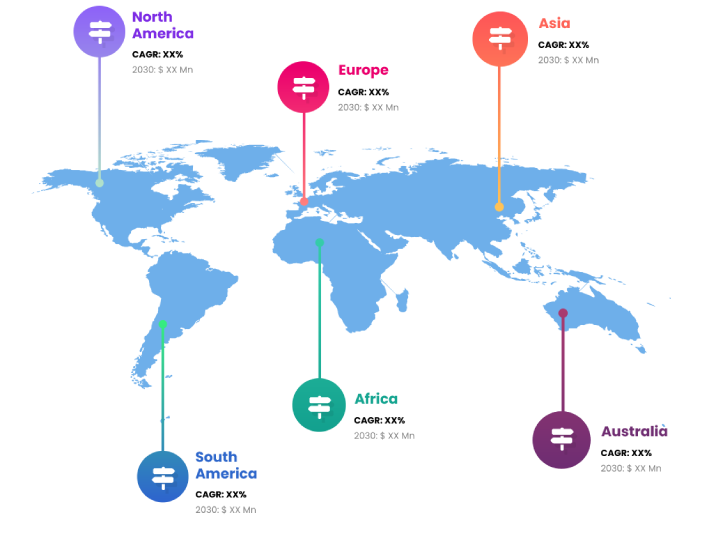The market expansion is attributable to the rising use of edge AI applications such as smart AI vision, smart energy, smart healthcare, smart factory, and intelligent transportation systems. For instance, to hasten the creation of sensor fusion applications and AI vision for the IoT, U.S. hardware company Synaptics released the Katana Edge AI Kit in March 2022. This kit streamlines the design and implementation of edge AI for the IoT by integrating motion, vision, and sound detection software, hardware, and wired and wireless communication.

Edge computing and artificial intelligence (AI) technology are combined to form edge AI. With the help of this approach, a collection of artificial intelligence algorithms with edge computing capabilities can execute on local devices for important applications. Local devices can now process data in real time without an internet connection thanks to this method. Numerous industries, including those in the automotive, manufacturing, healthcare, energy and utility, consumer products, IT and telecom, and others, use these devices.
Edge AI and cloud computing are interconnected and rely on one another in numerous ways. While cloud computing involves the delivery of computing resources over the internet, edge AI involves the deployment of AI applications & services at the network edge, where data is produced. Edge artificial intelligence (AI) provides advantages including decreased latency and increased real-time processing, enabling enterprises to make choices more quickly and accurately in crucial sectors like industrial automation, autonomous vehicles, and smart cities. By giving businesses access to the computational power and storage they need to implement AI applications at the network edge, the rising cloud computing usage has spurred the growth of Edge AI. As businesses produce more data, the demand for real-time insights will increase, driving the market's rise.
Edge artificial intelligence (AI) is the application of artificial intelligence (AI) technology to edge devices, such as smartphones, drones, and sensors, to carry out calculations and data analysis locally rather than sending the data to a centralized cloud server for processing. With the use of edge AI, machine learning algorithms can run right at the edge of the network, near to the source of the data and knowledge needed to power the system. Edge AI aims to improve data privacy and security by keeping it local, enable real-time data processing and analysis, decrease latency, use bandwidth as little as possible, and reduce latency.
Edge AI ensures high-performance data computing, enabling real-time data processing on IoT devices. Edge AI minimizes computation latency and returns processed data rapidly since the data needed to apply AI in edge devices is stored on the device or a nearby server rather than in the cloud. For instance, in March 2023, Inferrix Limited, a software firm in the U.K., and Minima Global Ltd, a blockchain platform developer based in Europe, teamed by fusing Minima's blockchain technology with Inferrix's IoT edge and AI services. By guaranteeing effective and secure connectivity between all sensors and safeguarding mission-critical data, our alliance intends to offer distinctive IoT solutions. The Multi-Access Edge Computing architecture provides networking, compute, and storage capabilities near end users and end devices at the network's edge. Virtual devices, as opposed to actual edge computers, are employed in MEC Edge AI use cases to process camera video streams over a 5G connection.
Edge AI can be used in quality control to spot flaws right away. Automation of the production, inventory, and procurement processes is possible using AI and edge computing. This makes it possible for businesses to predict and manage their supply chain better. These benefits will probably accelerate the growth of the edge AI market in the near future. Companies across a range of industries are seeking for ways to enhance their production methods. Edge computing and sensor data can be utilized to assess the overall efficiency of a piece of equipment. Manufacturers must make sure their welding is of the greatest caliber, for instance, when it comes to the automotive welding process. To monitor the process in real-time and spot flaws or safety hazards before the items leave the factory, edge computing and sensor data can be used.
A number of key developments are now affecting the growth and development of the edge artificial intelligence market. The increasing demand for real-time analytics and decision-making capabilities across multiple businesses is one noticeable trend. The use of Edge AI solutions, which provide quick response times and low latency, is being driven by this increase in demand. The fusion of edge computing with cloud services, which permits improved resource use and scalability, is another significant trend. As Edge AI enables localized data processing and reduces reliance on cloud services, concerns about data privacy and security are also pushing its adoption. Another important development is the integration of Edge AI with Internet of Things (IoT) devices, which enables localized data analysis and decision-making in industries like smart homes and healthcare. Edge-to-edge collaboration is another growing trend that makes it easier for edge devices to communicate directly with one another and share information. Finally, it is anticipated that the rollout of 5G networks will hasten the adoption of Edge AI by enabling high-speed, low-latency data transport. Together, these trends highlight the expanding significance and promise of edge AI in promoting innovation and effectiveness across industries.
Report Coverage
Global Edge AI research report categorizes the market for global based on various segments and regions, forecasts revenue growth, and analyzes trends in each submarket. Global Edge AI report analyses the key growth drivers, opportunities, and challenges influencing the global market. Recent market developments and Edge AI competitive strategies such as expansion, product launch and development, partnership, merger, and acquisition have been included to draw the competitive landscape in the market. The report strategically identifies and profiles the key Edge AI market players and analyses their core competencies in each global market sub-segments.
| REPORT ATTRIBUTES | DETAILS |
|---|---|
| Study Period | 2017-2030 |
| Base Year | 2022 |
| Forecast Period | 2022-2030 |
| Historical Period | 2017-2021 |
| Unit | Value (USD Billion) |
| Key Companies Profiled | NVIDIA Corporation, Intel Corporation, Qualcomm Technologies, Inc., Arm Limited, Amazon.com, Inc., Microsoft Corporation, IBM Corporation, Huawei Technologies Co., Ltd., Samsung, TIBCO (Cloud Software Group, Inc.), Apple Inc., Advanced Micro Devices, Inc., Synaptics Incorporated, Dell Inc., ADLINK Technology Inc., Alphabet Inc., Gorilla Technology Group, International Business Machines Corporation, Nutanix, Inc., Viso.ai |
| Segments Covered | • By Product |
| Customization Scope | Free report customization (equivalent to up to 3 analyst working days) with purchase. Addition or alteration to country, regional & segment scope |
Key Points Covered in the Report
- Market Revenue of Edge AI Market from 2021 to 2030.
- Market Forecast for Edge AI Market from 2021 to 2030.
- Regional Market Share and Revenue from 2021 to 2030.
- Country Market share within region from 2021 to 2030.
- Key Type and Application Revenue and forecast.
- Company Market Share Analysis, Edge AI competitive scenario, ranking, and detailed company
profiles. - Market driver, restraints, and detailed COVID-19 impact on Edge AI
Market
Competitive Environment:
The research provides an accurate study of the major organisations and companies operating in the global Edge AI market, along with a comparative evaluation based on their product portfolios, corporate summaries, geographic reach, business plans, Edge AI market shares in specific segments, and SWOT analyses. A detailed analysis of the firms' recent news and developments, such as product development, inventions, joint ventures, partnerships, mergers and acquisitions, strategic alliances, and other activities, is also included in the study. This makes it possible to assess the level of market competition as a whole.
List of Major Market Participants
NVIDIA Corporation, Intel Corporation, Qualcomm Technologies, Inc., Arm Limited, Amazon.com, Inc., Microsoft Corporation, IBM Corporation, Huawei Technologies Co., Ltd., Samsung, TIBCO (Cloud Software Group, Inc.), Apple Inc., Advanced Micro Devices, Inc., Synaptics Incorporated, Dell Inc., ADLINK Technology Inc., Alphabet Inc., Gorilla Technology Group, International Business Machines Corporation, Nutanix, Inc., Viso.ai
Primary Target Market
- Market Players of Edge AI
- Investors
- End-users
- Government Authorities
- Consulting And Research Firm
- Venture capitalists
- Third-party knowledge providers
- Value-Added Resellers (VARs)
Market Segment:
This study forecasts global, regional, and country revenue from 2019 to 2030. INFINITIVE DATA EXPERT has segmented the global Edge AI market based on the below-mentioned segments:
Global Edge AI Market, By Component
Hardware
Network
Edge Cloud Infrastructure
Software
Support Services
Global Edge AI market, By Industry
Automotive
Manufacturing
Healthcare
Energy & Utility
Consumer Goods
IT & Telecom
Others (Retail)
Global Edge AI market, Regional Analysis
- Europe: Germany, Uk, France, Italy, Spain, Russia, Rest of Europe
- The Asia Pacific: China,Japan,India,South Korea,Australia,Rest of Asia Pacific
- South America: Brazil, Argentina, Rest of South America
- Middle East & Africa: UAE, Saudi Arabia, Qatar, South Africa, Rest of Middle East & Africa
You will get in-depth and extensive edge ai market market research and competitor analysis for your business to help you develop more profound insights into the edge ai market Market.
Through INFINITIVE Data Expert is a professional Market Research services, I will identify the edge ai market market size, demand & opportunities, growth rate, and target audience with a comprehensive analysis of your competitors.



